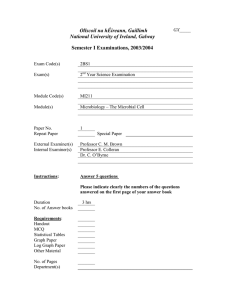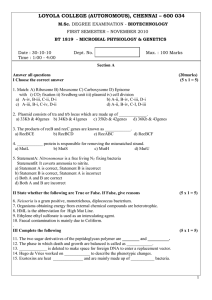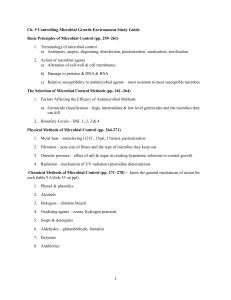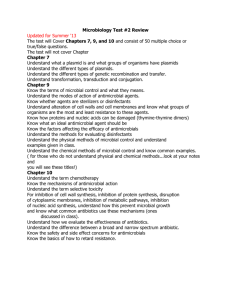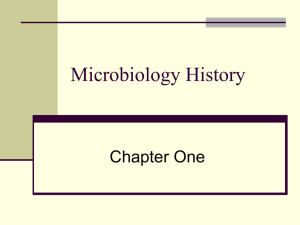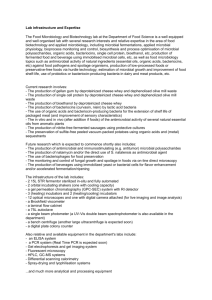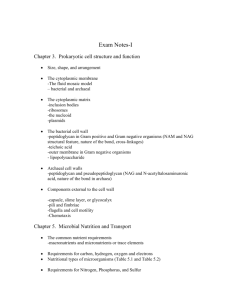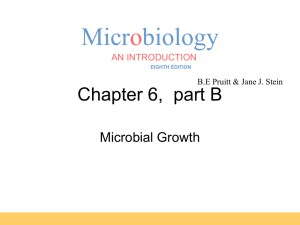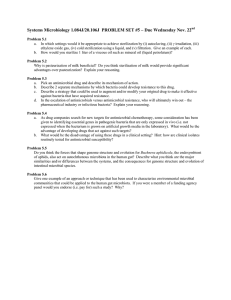Final Exam Review Unit 1 Introduction to Microbiology Unit 2
advertisement
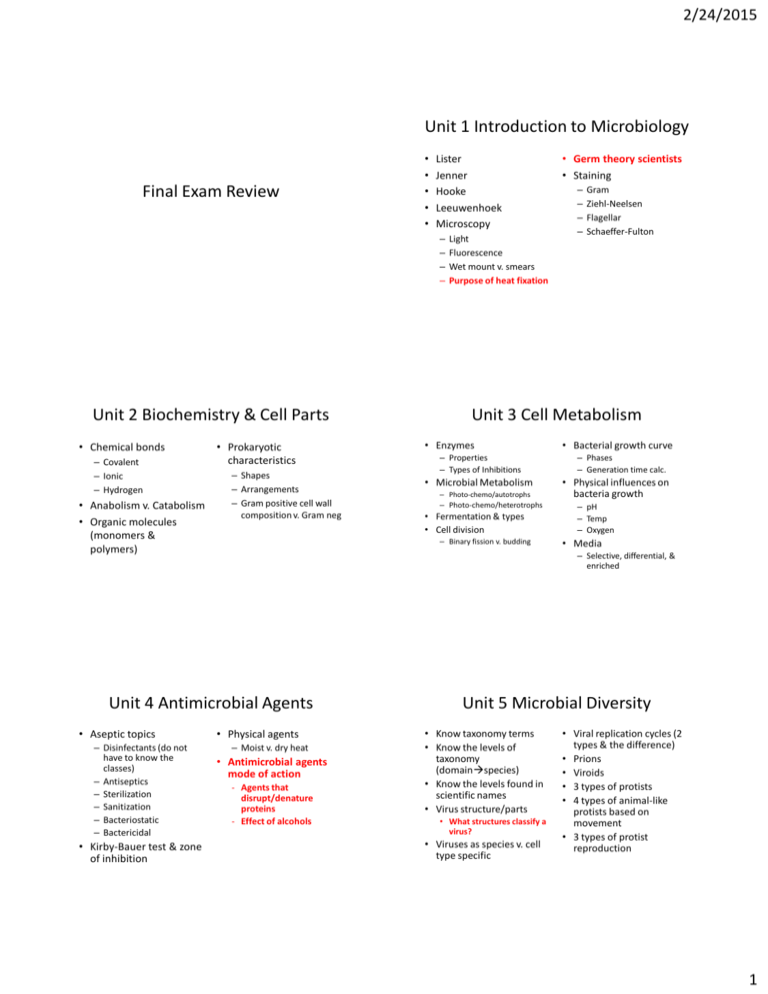
2/24/2015 Unit 1 Introduction to Microbiology Final Exam Review • • • • • Lister Jenner Hooke Leeuwenhoek Microscopy – – – – Unit 2 Biochemistry & Cell Parts • Chemical bonds – Covalent – Ionic – Hydrogen • Anabolism v. Catabolism • Organic molecules (monomers & polymers) • Prokaryotic characteristics – Shapes – Arrangements – Gram positive cell wall composition v. Gram neg – Disinfectants (do not have to know the classes) – Antiseptics – Sterilization – Sanitization – Bacteriostatic – Bactericidal • Kirby-Bauer test & zone of inhibition – – – – Gram Ziehl-Neelsen Flagellar Schaeffer-Fulton Unit 3 Cell Metabolism • Enzymes – Properties – Types of Inhibitions • Microbial Metabolism – Photo-chemo/autotrophs – Photo-chemo/heterotrophs • Fermentation & types • Cell division – Binary fission v. budding • Bacterial growth curve – Phases – Generation time calc. • Physical influences on bacteria growth – pH – Temp – Oxygen • Media – Selective, differential, & enriched Unit 4 Antimicrobial Agents • Aseptic topics Light Fluorescence Wet mount v. smears Purpose of heat fixation • Germ theory scientists • Staining • Physical agents – Moist v. dry heat • Antimicrobial agents mode of action - Agents that disrupt/denature proteins - Effect of alcohols Unit 5 Microbial Diversity • Know taxonomy terms • Know the levels of taxonomy (domainspecies) • Know the levels found in scientific names • Virus structure/parts • What structures classify a virus? • Viruses as species v. cell type specific • Viral replication cycles (2 types & the difference) • Prions • Viroids • 3 types of protists • 4 types of animal-like protists based on movement • 3 types of protist reproduction 1 2/24/2015 Unit 6 Genetics & Biotechnology • • • • Explain DNA replication, transcription, & translation The 3 types of RNA & their roles Types of mutations Differentiate between transformation, transduction, & conjugation • What is recombinant DNA used for? Unit 7 Epidemiology • Describe the 3 symbiotic relationships • Koch’s postulates • Stages of disease • Diseases in populations (definitions & these examples) – – – – Unit 8 The Immune System • Types of defenses • Defensive cells – B cells – T cells & types • Inflammation – Cardinal signs – Stages • Immunity – Acquired: natural vs. artificial & active vs. passive • Purpose of the immune response • Passive vs. active immunizations Pandemic: HIV Epidemic: flu/STD’s Endemic: cold Sporadic: plague • Reservoirs of infections – Definition & types • Portals of entry & exit • Modes of transmission: – Contact & its 3 types – Vehicle – Vector • Types of Epidemiology Units 9 & 10 Microbial Diseases • Know the pathogen & disease basics – – – – – – – Shingles Chickenpox Scarlet fever Syphilis Meningitis Botulism Tetanus • Definition & purpose of bioremediation • Foods made by microbes • Function of enterotoxins 2
